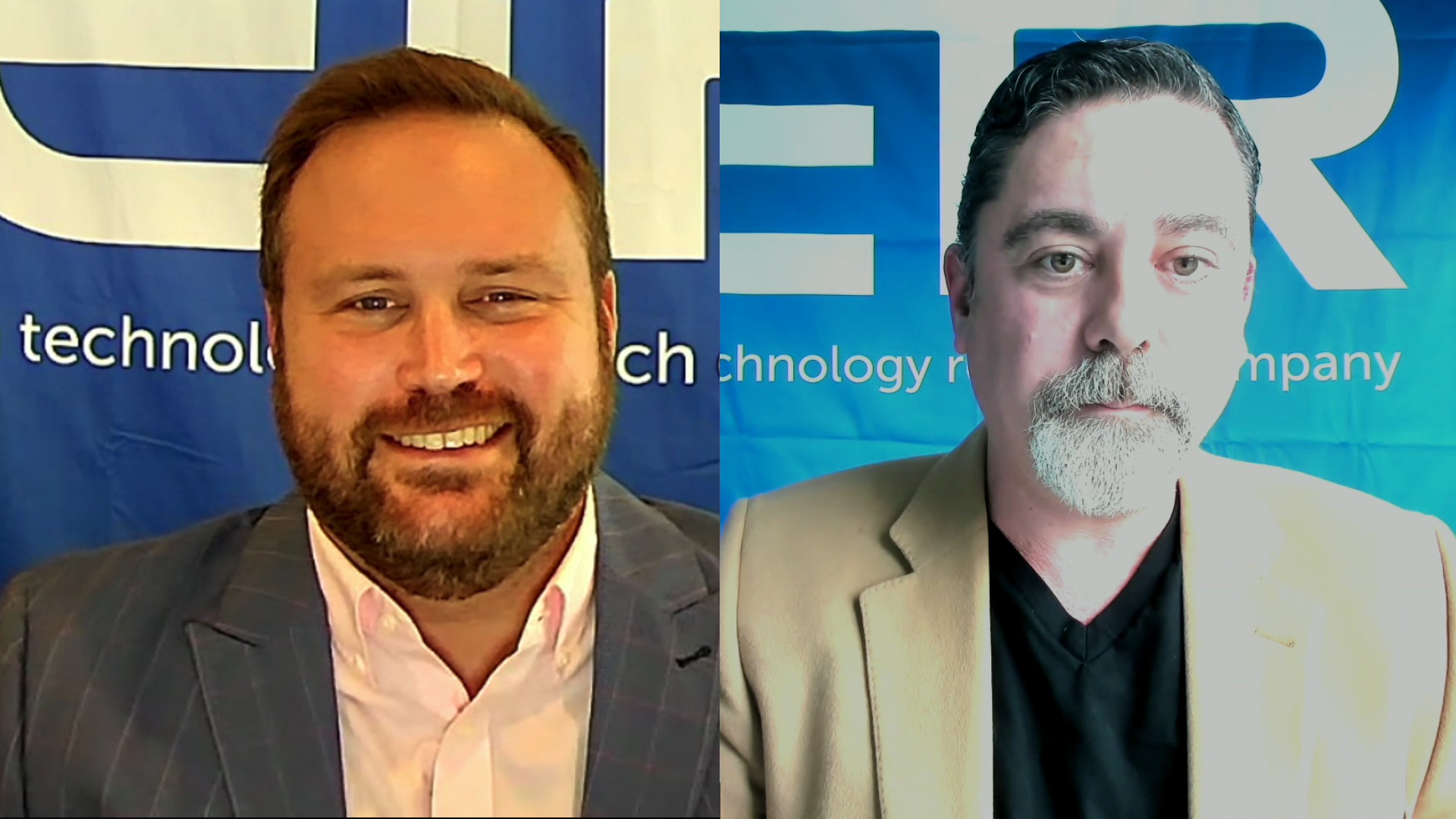 CLOUD
CLOUD
 CLOUD
CLOUD
 CLOUD
CLOUD
The supercloud concept aims to enhance resilience, scalability and security in cloud computing, with the goal of taking the cloud to the next level.
That’s key because the annual spend on cloud infrastructure is expected to grow at almost 70% compound annual growth rate over the next three years, according to Erik Bradley (pictured, right), chief strategist and director of research at Enterprise Technology Research.
Bradley says information technology decision-makers realize supercloud is the next generation of cloud computing. “If you want to call it metacloud, supercloud, it doesn’t matter,” he said. “The point is that we’re trying to define the next layer, the next future of work.”
Bradley and Daren Brabham (left), senior director analyst at ETR, spoke with theCUBE industry analyst Dave Vellante at the Supercloud2 event, during an exclusive broadcast on theCUBE, SiliconANGLE Media’s livestreaming studio. They discussed why supercloud is the next big thing in the enterprise sector. (* Disclosure below.)
Industry players such as Cloudflare Inc. have started to craft a name for themselves in the cloud space, according to Bradley, who said that Cloudflare is emerging as a real supercloud provider based on its cloud, networking and networking aspects.
“The definition of a true supercloud provider can’t just be one instance,” he pointed out. “You have to have multiple. So it’s not just the cloud; it’s networking aspect on top of it. It’s also security. And to me, Cloudflare is the only one that has all of it. They actually have the ability to offer all of those things.”
Supercloud aims to erase the stigma associated with multicloud and the associated complexities, according to Bradley.
“Basically, a senior developer IT architecture and DevSecOps says he uses the term all the time,” he said. “And the reason he uses the term is because multicloud has a stigma attached to it when he is talking to his business executives. The stigma is because it’s complex and it’s expensive. So he switched to supercloud to better explain to his business executives and his CFO and CIO what he’s trying to do.”
Based on the IT complexities within the enterprise world, supercloud helps manage it in a cleaner way, according to Brabham. Plus, it helps control complicated governance, security and regulatory issues.
“I think large multinational companies in certain areas like finance, online e-commerce, or things that need real-time data, they inherently are going to have a very complex environment that’s going to need to be managed in some kind of cleaner way,” he said. “And I think that’s why we’re seeing this need to have sort of this supercloud concept — to juggle all this, to wrangle all of it.”
The idea is that through a meta abstraction layer, the engineering complexity is driven away. Snowflake Inc. is a good example of this streamlining, according to Brabham.
“I think Snowflake has continued to kind of keep that mantle to a degree, and we see other tools trying to do that, but that’s all it is,” he pointed out. “It’s a paradigm shift back to this kind of meta abstraction layer that kind of simplifies what is the reality — that you need a complex multi-use case, multi-region way of doing business.”
Data and analytics are playing a pivotal role in showcasing the supercloud narrative, according to Brabham, who said Snowflake has broken ground by making businesses more flexible.
“With data and analytics, for instance, a lot of organizations were trying to bring the data closer to the business,” he stated. “That’s where we saw self-service analytics coming in. And tools like Snowflake, what they did was they helped point to different databases, they helped unify data and organize it in a single place that was, in a sense neutral, away from a single cloud vendor or a single database.”
The need for standards across clouds is dependent on the size and complexity of the underlying business, according to Bradley, who said anything that has real-time data metrics necessitates the supercloud idea.
“At the very large enterprise, there is complexity; there is not only complexity in the compute and actually deploying the applications, but the governance and the security around them,” he said. “But for lower end or business use cases, and for smaller businesses, it’s a little less necessary. You certainly don’t need to have all of these.”
Here’s the complete video interview, part of SiliconANGLE’s and theCUBE’s coverage of Supercloud2:
(* Disclosure: This is an editorial segment. TheCUBE is a paid media partner for Supercloud2, but sponsors for theCUBE’s event coverage do not have editorial control over content on theCUBE or SiliconANGLE.)
Support our mission to keep content open and free by engaging with theCUBE community. Join theCUBE’s Alumni Trust Network, where technology leaders connect, share intelligence and create opportunities.
Founded by tech visionaries John Furrier and Dave Vellante, SiliconANGLE Media has built a dynamic ecosystem of industry-leading digital media brands that reach 15+ million elite tech professionals. Our new proprietary theCUBE AI Video Cloud is breaking ground in audience interaction, leveraging theCUBEai.com neural network to help technology companies make data-driven decisions and stay at the forefront of industry conversations.